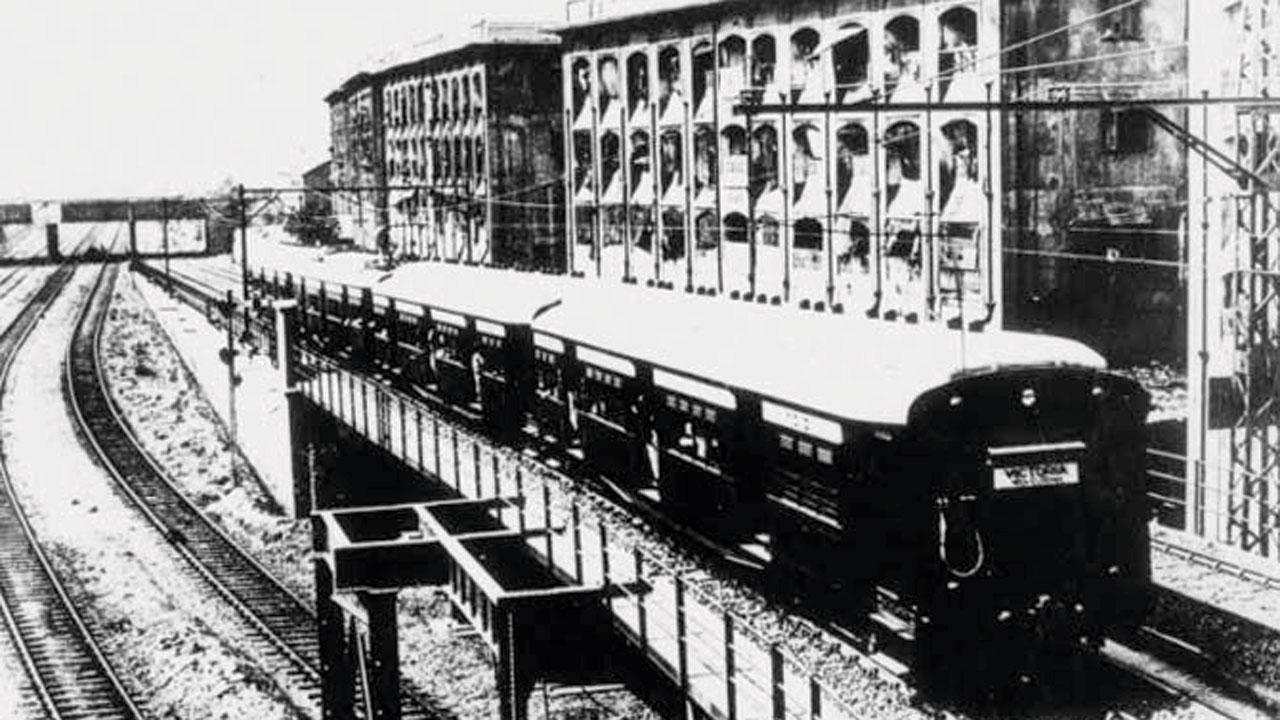
Central Railway starts work on century-old Sandhurst bridge
Updated on: 21 December,2021 08:03 AM IST | Mumbai
Rajendra B. Aklekar
Railway has planned to re-girder eight spans of the bridge, which was built in 1923; work on two spans done on Sunday; remaining to be done during upcoming train blocks
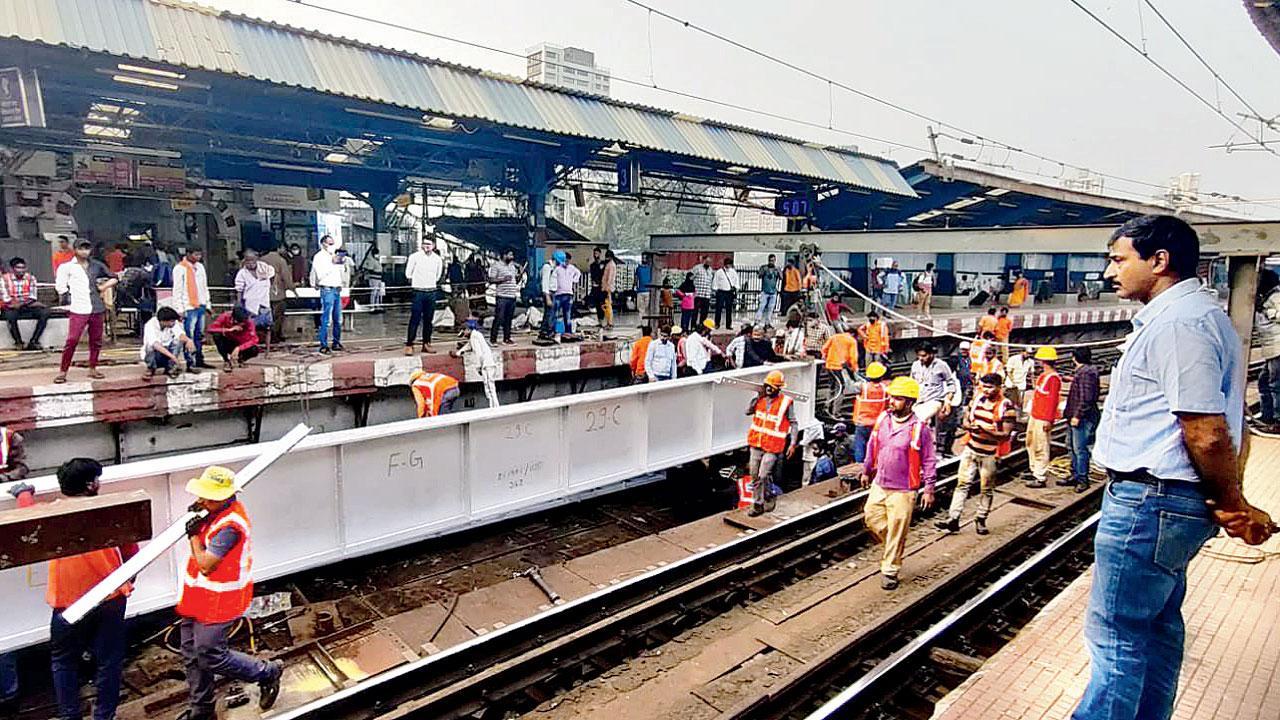
Workers replace century-old spans at Sandhurst Road station, country’s first two-tier station
A Century on, Central Railway began the process of replacing and strengthening the original Glasgow-built elevated harbour line bridge at Sandhurst Road railway station on Sunday. The station, built on a rail flyover, has its name in history books for being the country's first two-tier station.
ADVERTISEMENT
The bridge, constructed from 1921 to 1923, was built by the Great Indian Peninsula Railway company and operated India's first electric railway trains. “The bridge is about 100 years old. It was constructed in 1923. It used to be a ballasted deck slab which was replaced by channel (metal) sleepers in 1987,” said Central Railway’s chief public relations officer Shivaji Sutar.
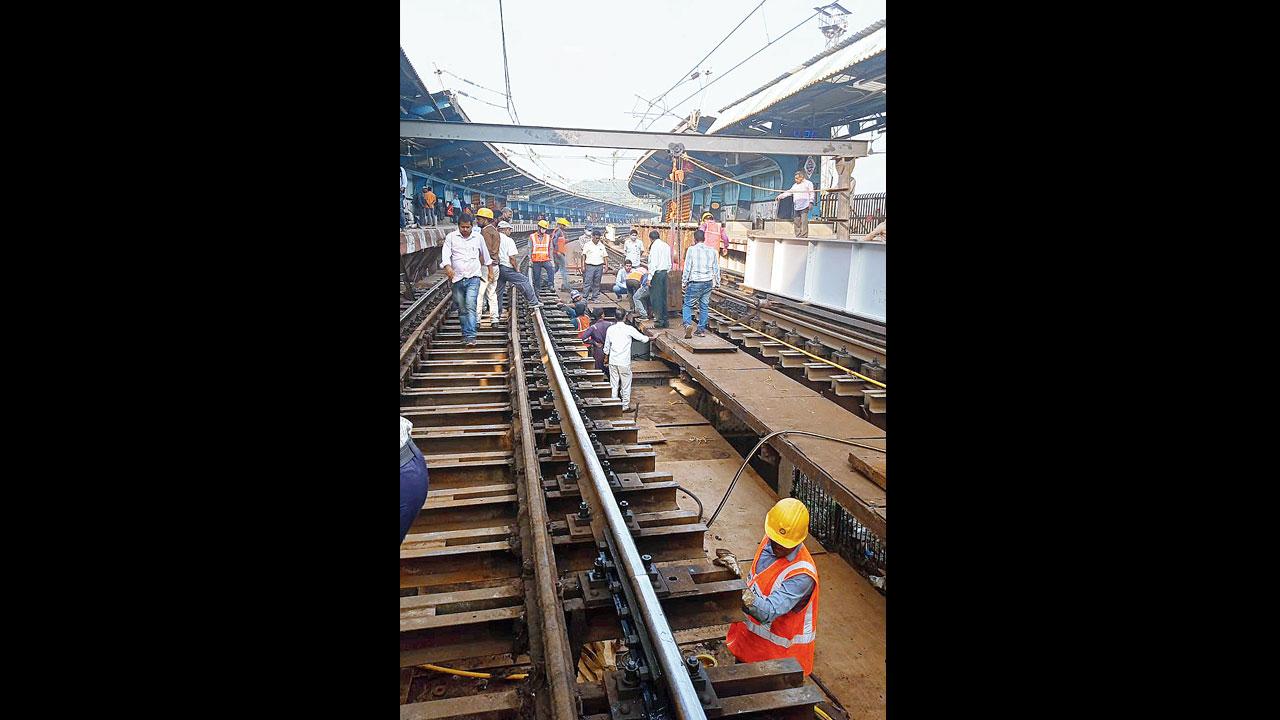
ALSO READ
Explaining the process, he said, “Re-girdering of this rail over rail bridge is proposed for eight spans due to its corroded condition. As the approach was difficult and the weight of the girder was of approximately 2,560 metric tonnes, CR changed two spans during the Sunday block which was extended by two hours and completed by 6.40 pm. The remaining girders will be changed during the coming blocks.”
Named after the then Bombay Governor William Mansfield, the 1st Viscount Sandhurst, the Sandhurst Road’s upper level station is a maze of steel frames and pillars. The viaduct has 2,788 tonnes of steel and is 1,728-feet long with 39 spans of various lengths. The cost of the bridge was Rs 20 lakh at that time. The pillars along the platform and bridge frames have huge metal plates bearing inscriptions, detailing the particulars of the construction, year and the contractor.

The plaques state “P&W Maclellan Clutha Works, Glasgow. GIPR Contract No. 1185-1921." Archives state that the firm P&W MacLellan from Glasgow was founded in 1811 and expanded in 1871 after the opening of the Clutha Works in MacLellan Street in the Glasgow suburb of Kinning Park and had a number of contracts from the Great Indian Peninsula Railway. In fact, the firm was also involved in the construction of the famous Chenab Bridge for the Indian State Railways in 1888, linking the Sandhurst Bridge to an era when large railway bridges were coming over huge rivers and sea beds.
1921
Year when the construction of the bridge started

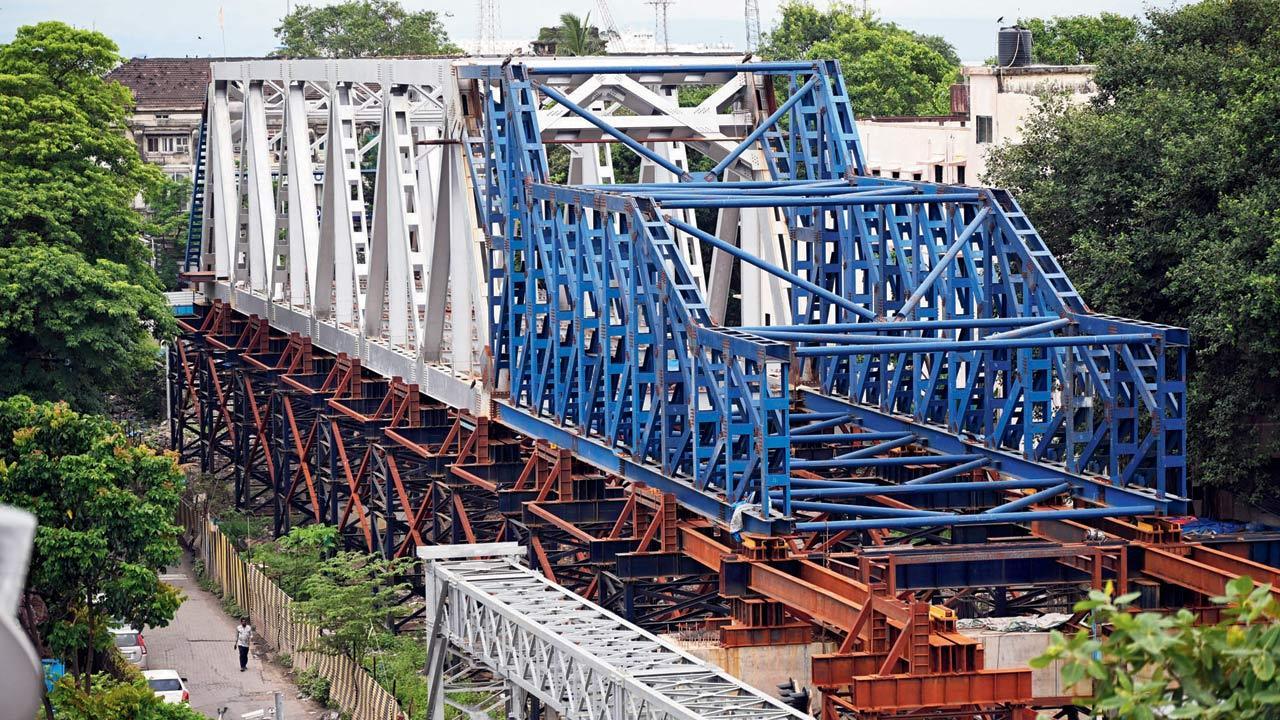
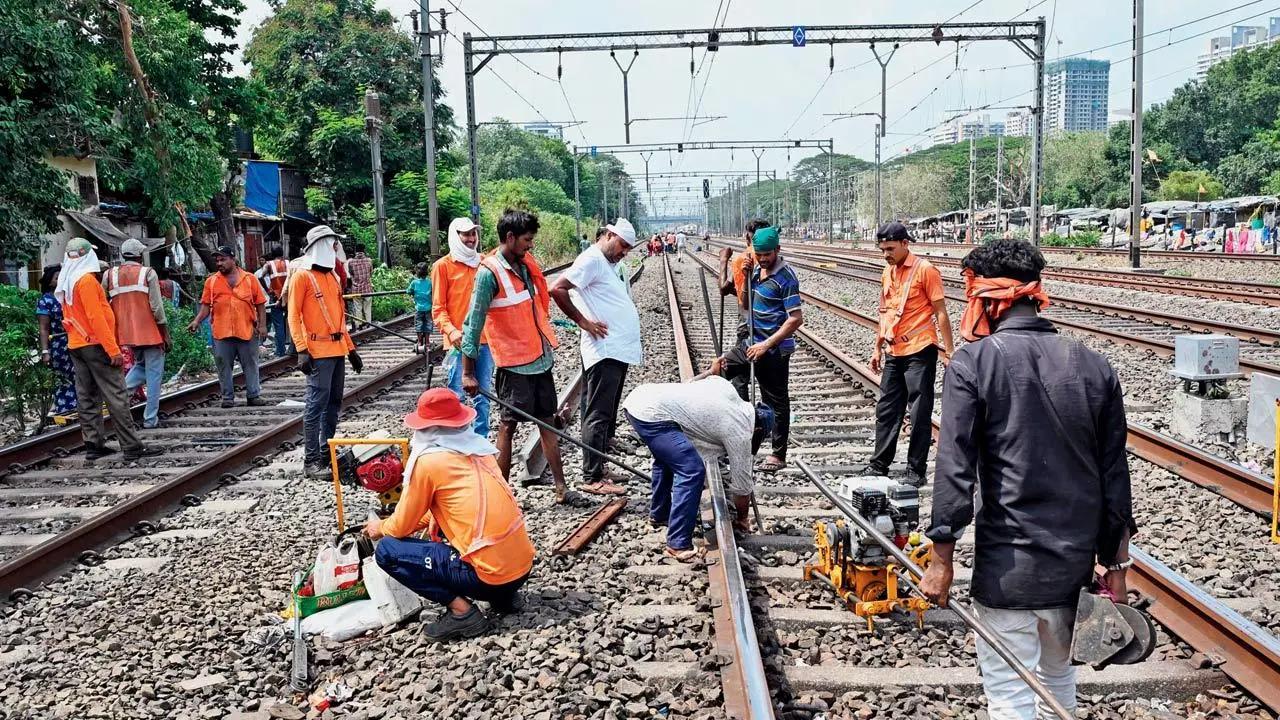


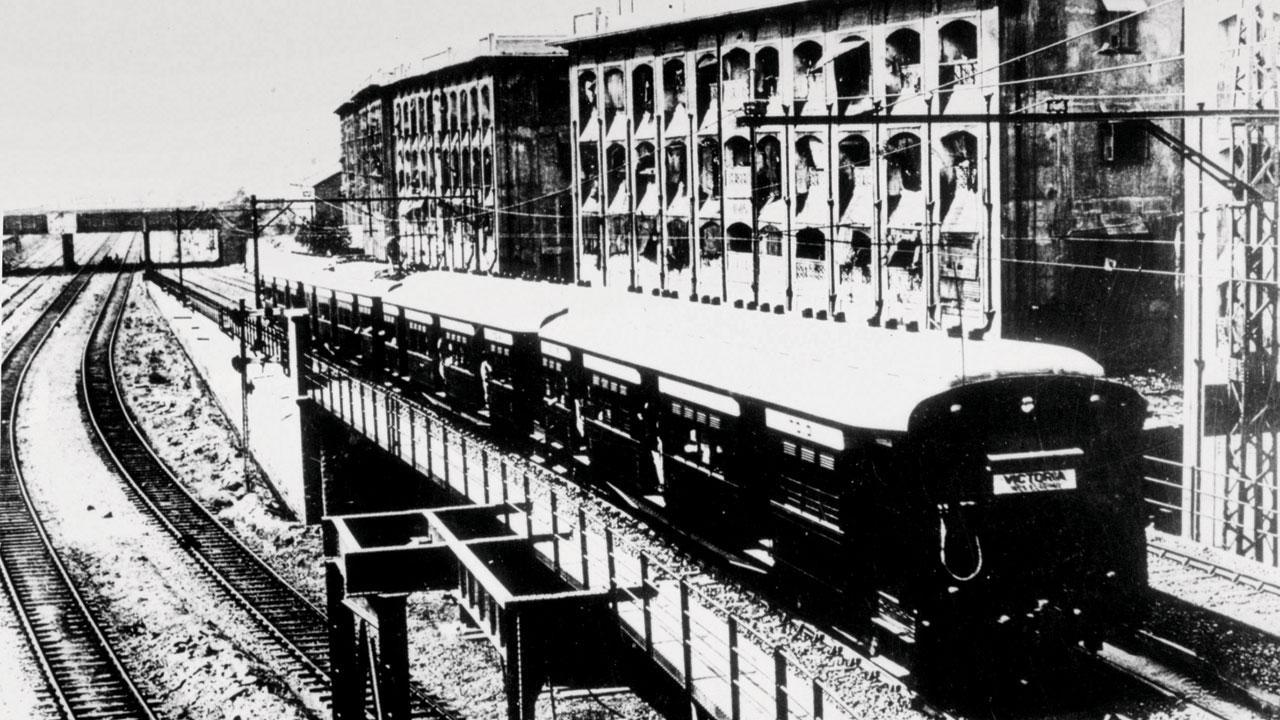
No comments:
Post a Comment